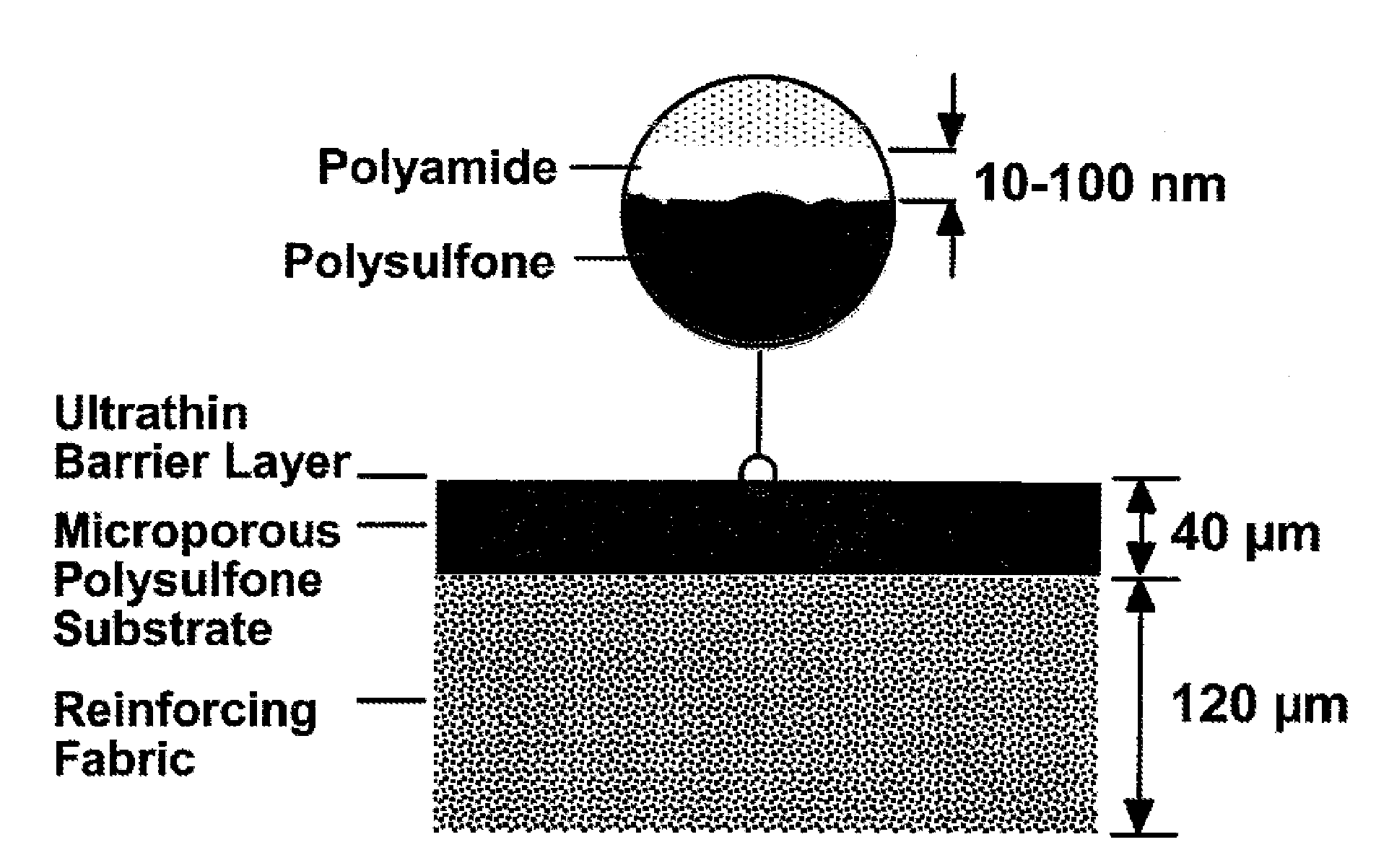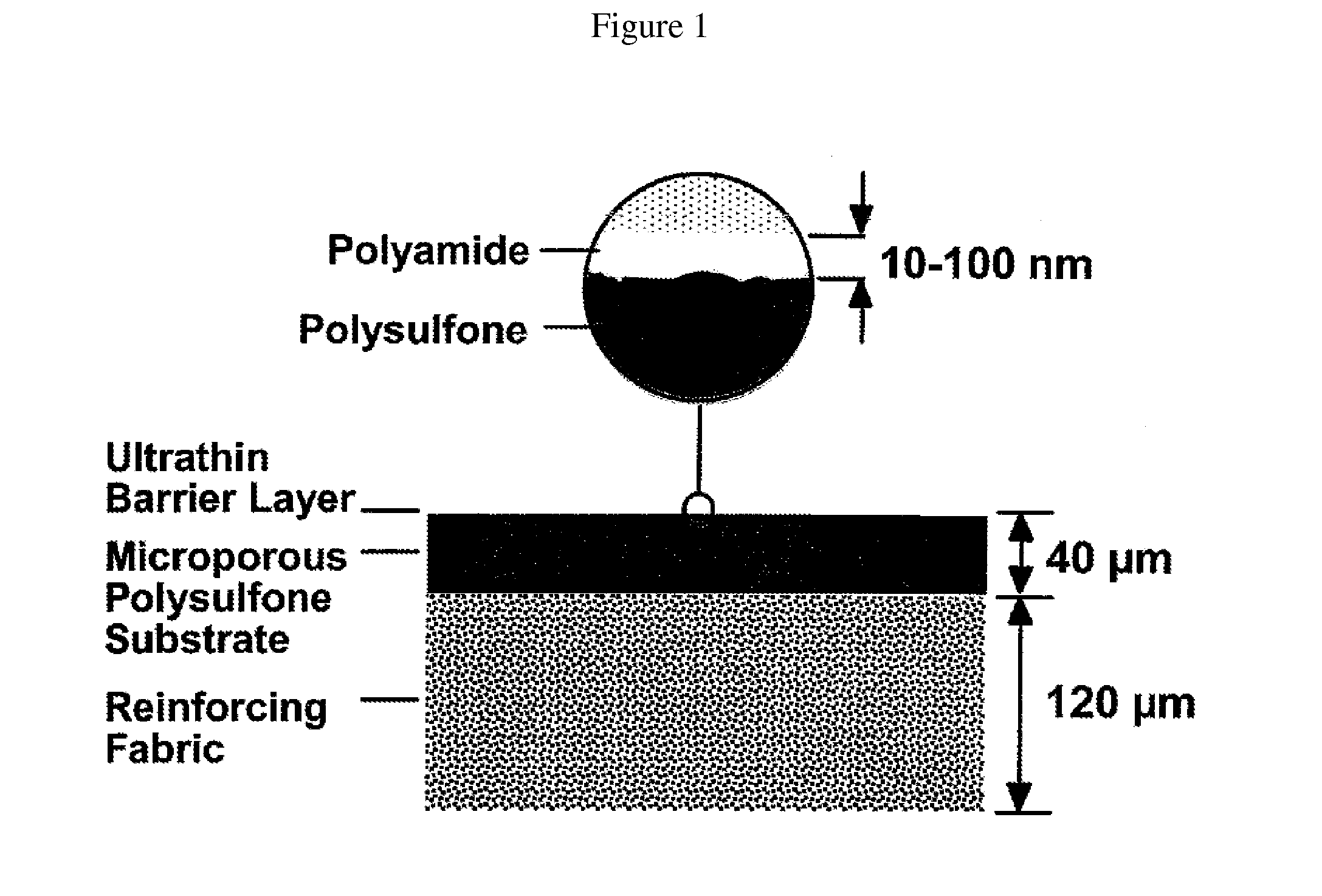Composite polyamide membrane with branched poly(alkylene oxide) modified surface
a polyamide, modified surface technology, applied in the field of membranes, can solve the problems of generating harmful byproducts such as trihalomethanes and other carcinogens, reducing the fouling of composite membranes. , to achieve the effect of reducing the fouling of composite membranes, preventing non-specific protein adsorption, and reducing the fouling
- Summary
- Abstract
- Description
- Claims
- Application Information
AI Technical Summary
Benefits of technology
Problems solved by technology
Method used
Image
Examples
specific embodiments
Preparation of Membranes
[0057]FT-30 reverse osmosis composite membranes were prepared on a FilmTec Corporation pilot coater in a continuous process. First the MPD was applied in water to the pre-made microporous polysulfone support including the backing non-woven fabric, and then the support was drained and nip rolled to remove the excess aqueous solution. The top surface of the support was sprayed with a solution of TMC in Isopar L (available from ExxonMobil Corp.).
[0058]At the oil water interface the polyamide was formed. The first coating was made with a MPD solution of 2.0 to 4.0%, and the second coating was made with a TMC concentration of 0.13% (5 mM). The TMC solution also included a molar stoichiometric ratio of TBP (tributyl phosphate) to TMC of 1:1. The membrane traveled first through a room temperature water bath after application of the second coating, then through a 98 C bath that contained 3.5% of glycerin. At this stage, a layer of PEO brush was coated onto the surfac...
PUM
| Property | Measurement | Unit |
|---|---|---|
| thickness | aaaaa | aaaaa |
| thickness | aaaaa | aaaaa |
| thickness | aaaaa | aaaaa |
Abstract
Description
Claims
Application Information
 Login to View More
Login to View More - R&D
- Intellectual Property
- Life Sciences
- Materials
- Tech Scout
- Unparalleled Data Quality
- Higher Quality Content
- 60% Fewer Hallucinations
Browse by: Latest US Patents, China's latest patents, Technical Efficacy Thesaurus, Application Domain, Technology Topic, Popular Technical Reports.
© 2025 PatSnap. All rights reserved.Legal|Privacy policy|Modern Slavery Act Transparency Statement|Sitemap|About US| Contact US: help@patsnap.com



